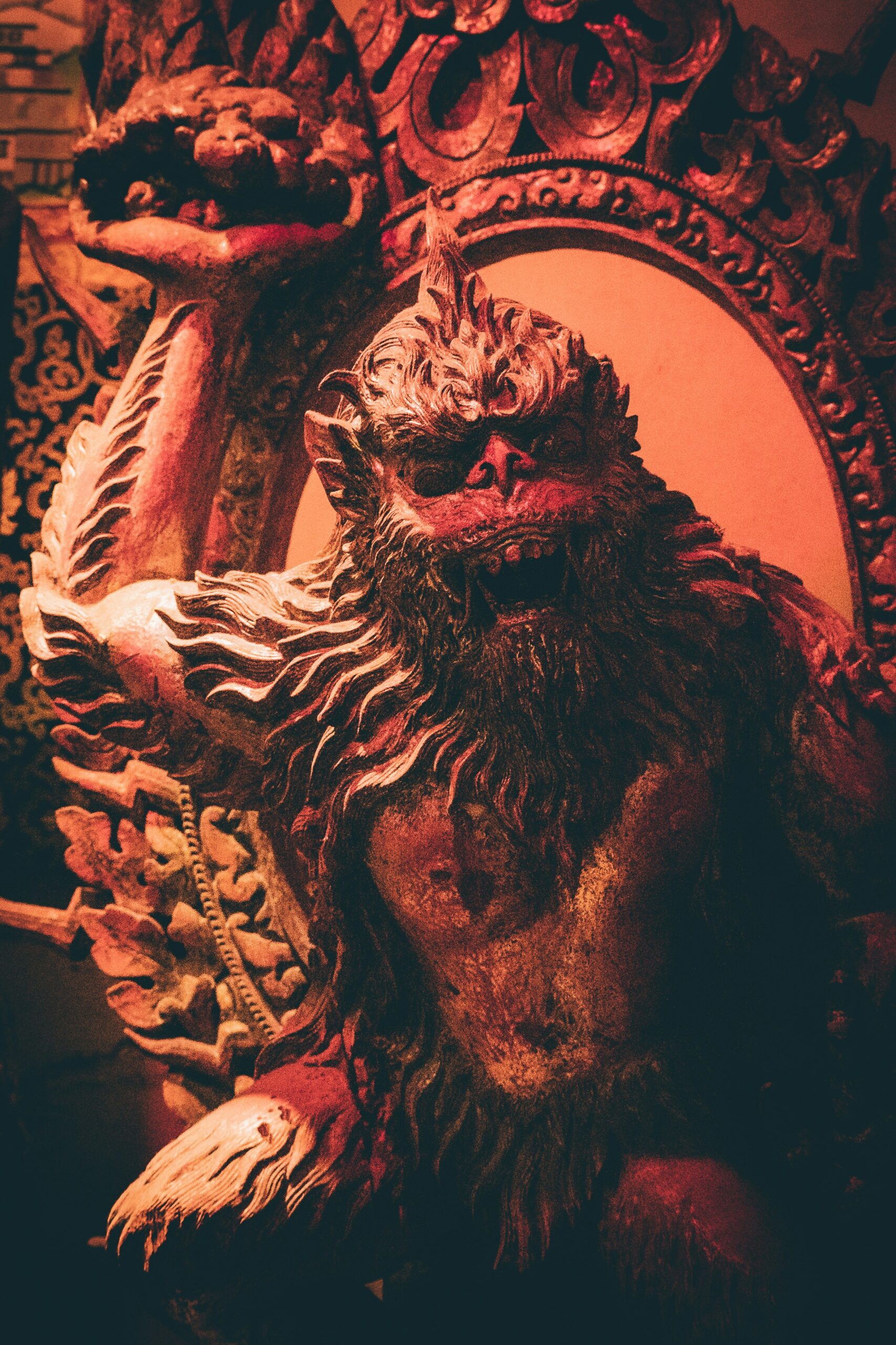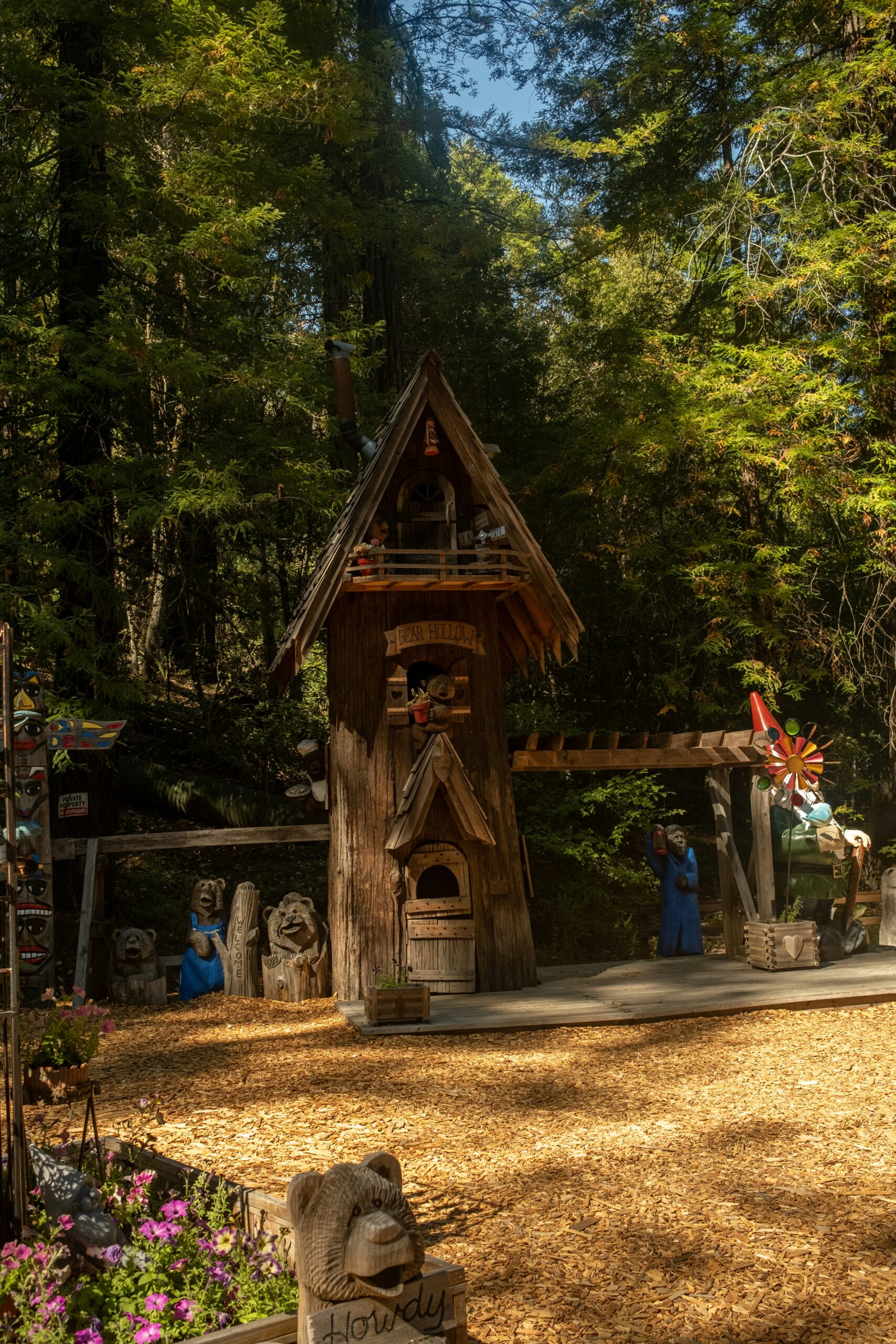Imagine standing atop the majestic Mount Shasta, surrounded by breathtaking views of nature's splendor. As you soak in the beauty, whispers of Bigfoot sightings echo through the air, filling your mind with curiosity. What does this elusive creature really look like, according to those who claim to have encountered it? Step into the shoes of these witnesses and embark on an intriguing journey into the mysterious world of Bigfoot on Mount Shasta.
Geographical Context of Mount Shasta
Mount Shasta, located in Northern California, is a majestic volcanic peak that stands at an impressive height of 14,179 feet. It is situated in the southern part of the Cascade Range, near the Siskiyou County. The mountain is known for its picturesque beauty, with its snow-capped peak visible for miles around. Its prominent location and stunning scenery make it a popular destination for hikers, mountaineers, and nature enthusiasts.
Features and location of Mount Shasta
Mount Shasta is a stratovolcano, characterized by its steep-sided conical shape formed by layers of hardened lava, ash, and pumice. It is the second highest peak in the Cascade Range and boasts an expansive snow-covered summit. The mountain is surrounded by the Shasta-Trinity National Forest, which adds to its awe-inspiring natural splendor. Located in a region known for its geothermal activity, Mount Shasta attracts geologists and researchers interested in studying volcanic phenomena.
Native American legends associated with Mount Shasta
Throughout history, Mount Shasta has held great spiritual significance for Native American tribes, particularly the Shasta, Klamath, and Modoc tribes. They believe that the mountain is a sacred place, often associated with supernatural beings and mythical creatures. Legends speak of mystical encounters with celestial beings who reside within the mountain. These stories continue to be passed down through generations and play a significant role in the cultural and spiritual fabric of the region.
Historical accounts of unusual sightings on Mount Shasta
Over the years, Mount Shasta has been the subject of numerous unusual sightings and folklore, captivating the curiosity of locals and visitors alike. From mysterious lights and UFO sightings to encounters with legendary creatures such as Bigfoot, the mountain has a reputation for attracting extraordinary experiences. These historical accounts, often shared through word of mouth, have contributed to the mystique surrounding Mount Shasta and its connection to the realm of the unknown.
Historical Timeline of Bigfoot Sightings on Mount Shasta
The presence of Bigfoot, a creature of folklore and legend, has been a subject of intrigue and fascination for decades. Mount Shasta, with its rich history of unusual sightings, has become a hotspot for Bigfoot enthusiasts.
Initial recorded sightings from the early 20th century
As early as the 1920s, reports of encounters with Bigfoot in the vicinity of Mount Shasta began to emerge. Local residents and hikers claimed to have glimpsed a large, hairy creature roaming the dense forests and remote areas of the mountain. These sightings, although met with skepticism at the time, laid the foundation for the ongoing fascination with Bigfoot in the region.
Sightings during the mid-century period
During the mid-20th century, the number of Bigfoot sightings increased, capturing the attention of both locals and researchers. Witnesses reported seeing a towering, ape-like creature, often described as standing between 7 to 9 feet tall, covered in thick fur, and possessing a powerful build. These sightings helped fuel the emerging interest in cryptozoology, the study of hidden or unknown animals, and encouraged further exploration into the mystery of Bigfoot on Mount Shasta.
Modern-day sightings and recent reports
In recent years, sightings of Bigfoot on Mount Shasta have continued to be documented. Both tourists and locals claim to have encountered the elusive creature while hiking or exploring the mountain's vast wilderness. With the advent of technology and the widespread use of smartphones, more photographs and videos purporting to capture the existence of Bigfoot have surfaced. These modern-day sightings have reignited public intrigue and motivated further research into the enigmatic presence of Bigfoot on Mount Shasta.

Physical Descriptions of Bigfoot
Witness descriptions of Bigfoot's appearance on Mount Shasta provide a fascinating insight into the creature's physical attributes.
Estimate of Bigfoot's height and weight
According to witness accounts, Bigfoot is believed to stand anywhere from 7 to 9 feet tall, towering over humans with its imposing presence. Witnesses often describe the creature as incredibly robust and muscular, suggesting a weight range between 500 and 900 pounds. These estimates reflect the awe-inspiring size and strength often associated with Bigfoot encounters.
Description of Bigfoot's body, including fur and facial features
Witnesses consistently report that Bigfoot is covered in long, dark hair from head to toe, with shades ranging from deep brown to black. The hair is described as coarse and shaggy, providing insulation and protection from the elements. Its face is often characterized by a broad, flat nose, deep-set eyes, and a pronounced brow ridge. Witnesses often mention Bigfoot's intimidating yet intelligent gaze, suggesting a creature capable of complex emotions and thoughts.
Unique physical characteristics reported by witnesses
Some witnesses claim to have observed additional physical characteristics that set Bigfoot apart. These unique features include a pronounced and conical-shaped head, massive shoulders, and elongated arms. Additionally, witnesses often note the creature's incredible agility and ability to navigate challenging terrain with ease. These distinct physical attributes contribute to the enduring mystery and allure of Bigfoot on Mount Shasta.
Variations in Descriptions
Witness descriptions of Bigfoot on Mount Shasta have shown some variations over time and among different witnesses.
Differences in descriptions over time
As the phenomenon of Bigfoot sightings on Mount Shasta has evolved, witness descriptions have also experienced some variation. Earlier accounts tended to focus on the creature's immense size and strength, while more recent descriptions emphasize subtler details, such as facial features and behavior. These differences may reflect a shift in focus from general awe to a desire for a more nuanced understanding of Bigfoot's appearance and nature.
Comparisons of reports from different witnesses
Comparing reports from different witnesses reveals a range of personal perspectives and interpretations. Some witnesses emphasize the creature's monstrous size and imposing figure, while others focus on its facial expressions or perceived intelligence. These variations provide valuable insights into the subjective nature of eyewitness testimony and the complex interplay between human perception and the mysterious image of Bigfoot.
Factors that may influence variations in descriptions
Several factors may contribute to the variations in witness descriptions of Bigfoot on Mount Shasta. First, individual perceptions and observational abilities can differ significantly, influencing how witnesses interpret the creature's appearance. Additionally, cultural and social influences may shape witnesses' understanding of what constitutes a Bigfoot sighting, leading to variations in reported details. The emotional state of witnesses during encounters, as well as the presence of accompanying environmental factors, can further influence their descriptions.

Witness Profiles
Examining the profiles of witnesses who claim to have encountered Bigfoot on Mount Shasta helps contextualize their observations.
Professional background of witnesses
Witnesses come from various professional backgrounds, ranging from outdoor enthusiasts and hikers to researchers and scientists. This diversity highlights the widespread nature of Bigfoot sightings and suggests that encounters can happen to anyone, irrespective of their occupation. Professionals with expertise in fields such as biology, anthropology, or wildlife management often provide valuable insights into the authenticity of reported encounters.
Witness’s familiarity with the local ecology and wildlife
Many witnesses on Mount Shasta possess a deep knowledge of the local ecology and wildlife, often spending significant time exploring the region. Their familiarity with the area allows them to compare their encounters with known species, providing a heightened ability to discern anomalies and differentiate Bigfoot from other creatures. This knowledge enhances the credibility of their observations and contributes to a more comprehensive understanding of Bigfoot's presence in the area.
Psychological analysis of the witnesses
Psychological analysis of witnesses can reveal the emotional impact of their encounters and shed light on the reliability of their testimony. Witness accounts often express exhilaration, curiosity, fear, or awe. This range of emotions suggests genuine experiences and an inability to easily dismiss encounters with Bigfoot as mere fabrication. Understanding the psychological state of witnesses can help distinguish between genuine encounters and potential hoaxes or misinterpretations.
Behavioral Attributes of Bigfoot
Witness reports provide information about potential behaviors exhibited by Bigfoot on Mount Shasta.
Reported movements and activities
Witnesses describe Bigfoot as predominantly nocturnal, often preferring to explore the mountain's surroundings under the cover of darkness. Reports indicate that the creature moves with great agility and stealth, leaving behind minimal trace of its presence. Activities such as tree shaking, rock throwing, and vocalizations have also been attributed to Bigfoot, suggesting that it engages in territorial behavior and possibly communicates with its kin.
Interactions, if any, with humans
While encounters with Bigfoot on Mount Shasta are generally perceived as non-threatening, witnesses recount varying degrees of interaction. Some witnesses have reported benign exchanges, including fleeting eye contact or watching Bigfoot from a distance. However, there have been rare instances where witnesses claim to have experienced aggression or intimidation from the creature. These reports provide insight into the complex and enigmatic nature of Bigfoot's interactions with humans.
Presence of vocal and other types of communication
Witnesses often describe hearing vociferous vocalizations during their encounters with Bigfoot. These sounds range from deep, guttural growls to high-pitched shrieks or hoots. Some witnesses have even reported potential attempts at verbal communication, such as distinct, repetitive sounds or melodic patterns. The study of Bigfoot vocalizations adds another layer of intrigue to the ongoing quest for understanding the creature's behavior and potential language.

Comparison with Other Bigfoot Sightings
Comparing Bigfoot sightings on Mount Shasta with those reported in other regions and globally provides a broader perspective on the phenomenon.
Similarities and differences with sightings in other regions
In comparing Bigfoot sightings on Mount Shasta with those from other regions, certain similarities emerge. Witness descriptions often share commonalities in terms of the creature's physical attributes, behaviors, and reported activities. However, differences in regional folklore, ecological factors, and cultural beliefs can influence witness accounts, resulting in variations in specific details and the overall narrative surrounding Bigfoot.
Global patterns of Bigfoot sightings
Bigfoot sightings are not confined to Mount Shasta or any specific region; they have been reported across the globe for centuries. The existence of similar creatures, often referred to by different regional names, testifies to the significance of the phenomenon in various cultures. This global pattern highlights humanity's enduring fascination with mysterious creatures and the potential existence of elusive beings that defy scientific classification.
Analysis of Mount Shasta sightings in the wider Bigfoot mythos
Mount Shasta's role in the wider Bigfoot mythos is pivotal, as the mountain has become synonymous with unexplained encounters and extraordinary phenomena. The rich history of sightings and the mystique surrounding the area have cemented Mount Shasta's place in the collective consciousness of Bigfoot enthusiasts. The ongoing research and documentation of sightings on Mount Shasta contribute to the broader understanding of Bigfoot's existence and its significance in popular culture.
Evidence Collection and Analysis
The collection and analysis of various forms of evidence contribute to the pursuit of validating Bigfoot sightings on Mount Shasta.
Physical evidence, such as footprints or hair
One of the most compelling types of evidence comes in the form of physical traces left behind by Bigfoot. Casts of footprints, often displaying distinct characteristics like dermal ridges or anatomical details, provide tangible proof of the creature's existence. Additionally, the collection of hair samples for DNA analysis holds promise for establishing conclusive scientific evidence. The meticulous documentation and examination of physical evidence play a crucial role in determining the validity of reported encounters.
Photographic and video evidence
Advancements in technology have empowered witnesses to capture visual evidence of Bigfoot sightings on Mount Shasta. Photographs and videos offer visual documentation that can be examined and analyzed by experts. While these forms of evidence are subject to scrutiny and potential manipulation, they provide a valuable window into the world of Bigfoot and contribute to the ongoing investigation of its existence.
Critique of evidence and its validity
Critics of Bigfoot sightings scrutinize the available evidence, often highlighting potential flaws or sources of skepticism. Skeptics question the authenticity of footprints, suggesting fraudulent creation or misinterpretation of mundane tracks. They also challenge the reliability of photographic and video evidence, citing issues with image quality or the potential for misidentification. Rigorous analysis and skepticism are essential for maintaining scientific rigor and ensuring accurate evaluation of the evidence presented.
Skepticism and Debunking
The phenomenon of Bigfoot sightings on Mount Shasta is met with various degrees of skepticism and attempts at debunking.
Common skeptical reactions to Bigfoot sightings
Skepticism towards Bigfoot sightings on Mount Shasta and elsewhere stems from a desire for rigorous scientific inquiry. Common skeptical reactions include dismissing encounters as misidentifications of known animals, attributing sightings to hoaxes or hallucinations, or questioning the reliability of eyewitness testimony. Skepticism, when approached with critical thinking and scientific scrutiny, serves as a valuable counterbalance to unwarranted beliefs or unsubstantiated claims.
Criticism from the scientific community
The scientific community has largely remained skeptical of Bigfoot sightings and rejects the existence of the creature until irrefutable evidence is provided. Critics argue that the lack of verifiable physical remains, such as fossils or skeletal remains, contradicts the common understanding of the workings of the natural world. They insist on adherence to scientific methodology, rigorous evidence collection, and peer-reviewed research to support any claims related to Bigfoot sightings on Mount Shasta or elsewhere.
Analysis of hoaxes and mistaken identities
Hoaxes and misidentifications have plagued the field of Bigfoot research, casting doubt on the credibility of some sightings. Individuals seeking attention or profit have been known to perpetrate elaborate hoaxes, adding to public skepticism. Additionally, misidentifications of known animals, especially black bears, can lead witnesses to mistakenly believe they have encountered Bigfoot. Critical analysis and diligent investigation are necessary to separate genuine encounters from potential deceit or errors.
Continuing Efficacy of Bigfoot Legend at Mount Shasta
The legend of Bigfoot on Mount Shasta continues to captivate the local community and hold cultural significance.
Cultural significance of Bigfoot in the local community
For the local community surrounding Mount Shasta, Bigfoot has become an iconic figure, deeply rooted in local folklore and identity. The legend of Bigfoot inspires a sense of wonder and exploration, fostering a connection between people and the wilderness. Local events, conferences, and festivals centered around Bigfoot celebrate the creature's mythical status and promote communal engagement with the legend.
Bigfoot’s role in tourism and local folklore
The allure of Bigfoot on Mount Shasta has not gone unnoticed by the tourism industry. The legend attracts visitors from far and wide, contributing to local economies through tourism-related activities and businesses. Souvenirs, guided tours, and themed attractions centered around Bigfoot create a market for enthusiasts and curious travelers alike. Bigfoot's presence in local folklore serves as a unique selling point, drawing attention to the natural beauty of Mount Shasta and the surrounding region.
Future prospects for sightings and research
As long as the legend of Bigfoot endures on Mount Shasta, there will likely be future prospects for sightings and research. The ongoing exploration of the mountain's vast wilderness and technological advancements offer opportunities for increased documentation and analysis of encounters. Open-minded researchers and citizen scientists remain committed to the quest for evidence, continuing to contribute to the ongoing debate surrounding the existence of Bigfoot on Mount Shasta and beyond.
In conclusion, witness descriptions of Bigfoot sightings on Mount Shasta provide a captivating glimpse into the mystery surrounding this elusive creature. The geographical context, historical timeline, physical descriptions, variations, witness profiles, behavioral attributes, and comparisons with other sightings all contribute to the comprehensive understanding of Bigfoot's presence on Mount Shasta. Evidence collection and analysis, skepticism and debunking, and the cultural significance of Bigfoot in the local community further enrich the exploration of this enduring legend. The future holds exciting possibilities for further research, ensuring that the allure of Bigfoot at Mount Shasta will continue to capture the imagination and intrigue of generations to come.
